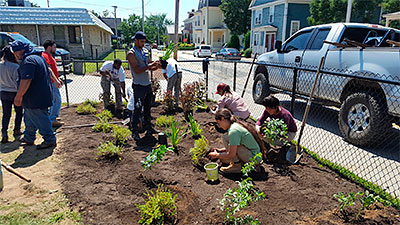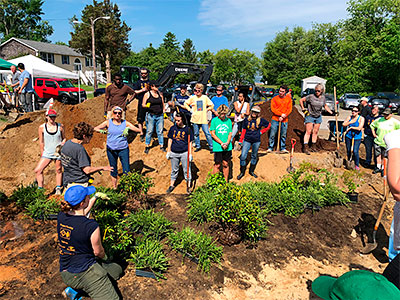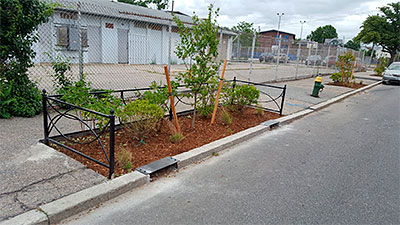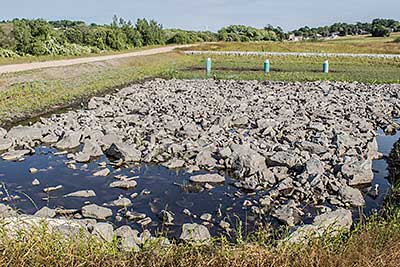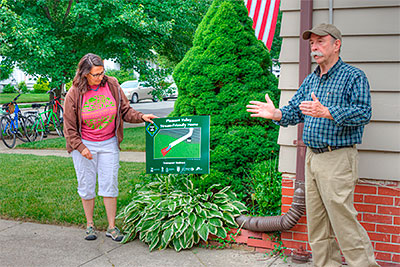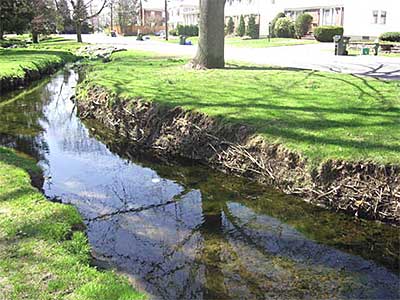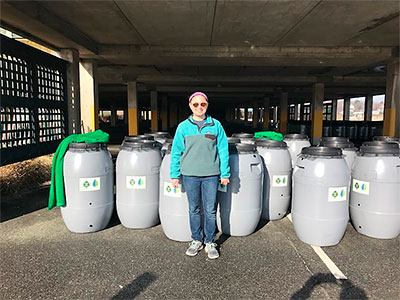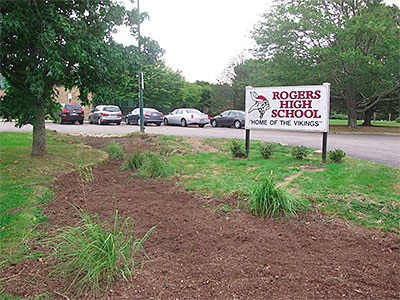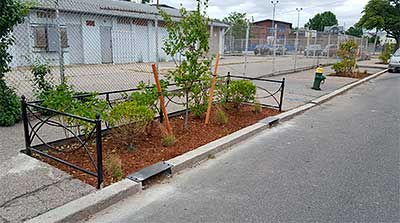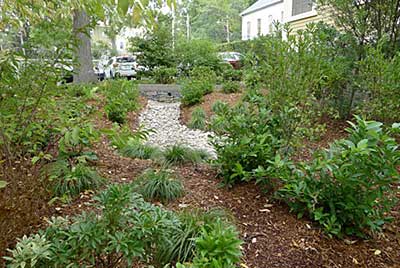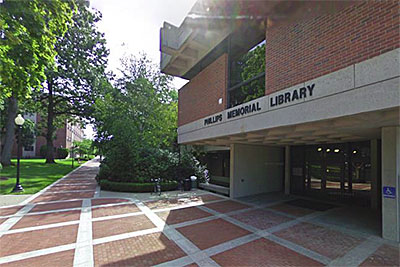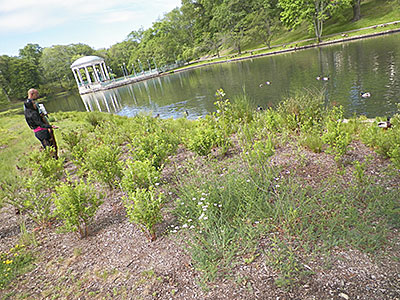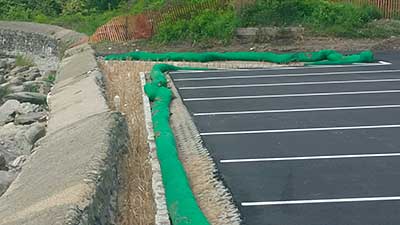Green Infrastructure Projects in Rhode Island
Many Green Infrastructure projects already exist across Rhode Island. Those listed below will give you a sample, and you may want to find them to take a look in person.
First shown below are projects sponsored by Green Infrastructure Coalition members. These are followed by other projects with which the Green Infrastructure Coalition has been closely connected. Since the Coalition focuses on the Providence metro area and the Newport-Aquidneck area these projects are all from those two locations.
At the bottom of the page are more Green Infrastructure projects from across Rhode Island. This list represents projects installed over the past five years by various agencies and NGOs, and includes more than 75 projects described in the University of Rhode Island Low Impact Development (LID) Inventory since 2008, many built by private landowners and businesses.
A Selection of Projects Sponsored by Green Infrastructure Coalition Members
The City of Providence Office of Sustainability has developed a story map showing green infrastructure projects in Providence.
Project: Children's Friend Rain Garden
Location: Providence
Overview: This small rain garden, just a few blocks southwest of downtown Providence, provides a place where pre-school teachers can educate their kids about nature.
Project: Common Fence Point Community Hall Rain Garden
Location: Portsmouth
Overview: This one-day project resulted in a rain garden that will collect runoff from the roof of the community hall and allow it to infiltrate rather than running off. And it also beautifies the neighborhood, replacing pavement with flowers.
Project: Dexter St. Curb Cuts and Tree Plantings
Location: Providence
Overview: These new street trees along Dexter Street in urban Providence, allow rainwater to infiltrate and also beautify the neighborhood. In time they will also provide welcome shade in the summer.
Project: J. T. Owens Park Rain Garden
Location: Providence
Overview: This vegetated infiltration basin at the corner of Niantic Avenue and Swanton Street helps prevent stormwater runoff in the neighborhood from reaching Mashapaug Pond. The runoff will flow to a rain garden and soak through permeable soils into the groundwater.
Project: Kempenaar Valley Stormwater Infiltration
Location: Middletown
Overview: The Gravel Wet Vegetated Treatment System at Kempenaar Valley filters stormwater run-off of nearby impervious surfaces and residential lawns from the Two Mile Corner area in Middletown. This constructed wetland was designed to reduce bacteria loading into the Bailey Brook, which feeds two drinking supply reservoirs (Green End Pond and Easton Pond) for residents of Aquidneck Island.
Project: King Park Rain Garden
Location: Newport
Overview: This demonstration rain garden in Newport's King Park is planted with a mix of decorative flowers and hardy plants like swamp milkweed, seaside goldenrod, mountain mist and cigar plants. Small rain gardens like this can infiltrate as much as 25,000 gallons of water in a year.
Project: North Burial Grounds Amphibian Habitat
Location: Providence
Overview: Green infrastructure work might provide an occasional opportunity to create wetland habitats that would benefit amphibians. A drainage swale in the Providence’s North Burial Grounds provides a breeding pool for tadpoles of two species, Fowlers Toad and Gray Tree Frog. Greg Gerritt of Friends of the Moshassuck has received grants to video and compare drainage swales in urban locations that are not heavily impacted by automotive or industrial pollutants that would adversely affect amphibians through their skin.
Project: Pleasant Valley Neighborhood Retrofits
Location: Providence
Overview: This Woonasquatucket River Watershed Council project brought rain barrels and other green infrastructure to homes and streets throughout the Pleasant Valley neighborhood.
Project: Pleasant Valley Stormwater Improvement
Location: Providence
Overview: Pleasant Valley Stream originates on the campus of Rhode Island College, and its watershed includes parts of Providence College, La Salle Academy, Mount Pleasant High School, and the surrounding residential community. It has been appropriated as an open stormwater channel, from which fate Woonasquatucket River Watershed Council is attempting a rescue.
Project: Rain Barrel Fest
Location: Newport
Overview: This project distributed 140 rain barrels to the Aquidneck Island community to help encourage people to save rainwater rather than allowing it to run off. Twenty-four of the rain barrels were painted with lively decorations by local art classes.
Project: Red Shed Green Roof
Location: Providence
Overview: The Red Shed Bike Shop in Waterside Park is sporting a revamped green roof. A team of 15 workers from The Woonasquatucket Watershed Council’s River Rangers, Groundwork Rhode Island and One Neighborhood Works installed 160 vegetated shortgrass modules.
Project: RIPTA Parking lot
Location: Providence
Overview: The Rhode Island Public Transit Authority parking lot on Elmwood Ave. in Providence is the largest permeable pavement lot in New England and is designed to allow stormwater to seep slowly into the surrounding soils.
Project: Rogers High School
Location: Newport
Overview: The actions to reduce reduce runoff from areas on school grounds to the watershed that includes Newport’s Lily Pond include construction of rain gardens at two sites and pavement removal from two areas.
Project: Save the Bay
Location: Providence
Overview: Save the Bay Center was designed to be energy efficient and reduce stormwater runoff. Design elements include a sloped vegetated roof, bioremediation ponds, a permeable parking area and bioswales.
Project: Sprucing up Dexter
Location: Providence
Overview: Coalition member Groundwork Rhode Island planted 13 trees and 32 plants along Dexter St., including Providence's first tree pit with curb cut, which will allow storm water to be absorbed into the pit rather than running untreated into our storm drains.
Other Green Infrastructure Projects in Rhode Island
Project: Congdon House (RISD) Rain Gardens
Location: Providence
Overview: Two gardens between Congdon House and Dunnell House reduce runoff between the two buildings and slow and infiltrate stormwater flowing from paved areas nearby and the roofs of the houses.
Project: Providence College
Location: Providence
Overview: There are four major projects on campus that incorporate vegetated swales, bioretention bays, infiltration trenches, permeable pavement and underground storage cells. The projects are designed to reduce and treat stormwater runoff to storm drains on streets near the campus.
Project: Roger Williams Park
Location: Providence
Overview: Five projects have been completed in the park to control stormwater flows and reduce phosphorus contamination. Techniques include bioretention gardens, pavement removal, infiltration basins and flumes to redirect stormwater.
Project: Second Beach Depaving
Location: Middletown
Overview: The project removed pavement along the wall separating the parking lot from the beach to ease runoff in the parking areas and on Sachuest Point Road.
Project: The Steel Yard
Location: Providence
Overview: The former brownfield site infiltrates 90% of its average yearly rainfall through a system of bioswales and permeable pavement. Lead concentration was so high that a top layer of soil was removed, and a cap of 12 inches of clean fill or pavement was added.
